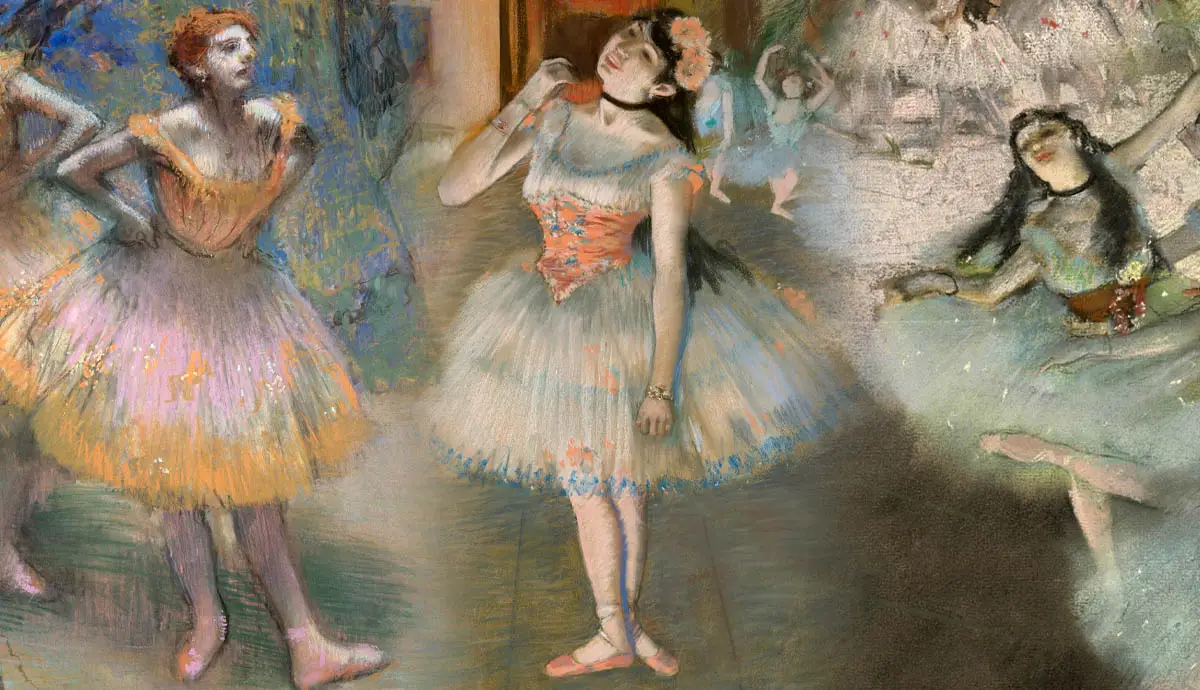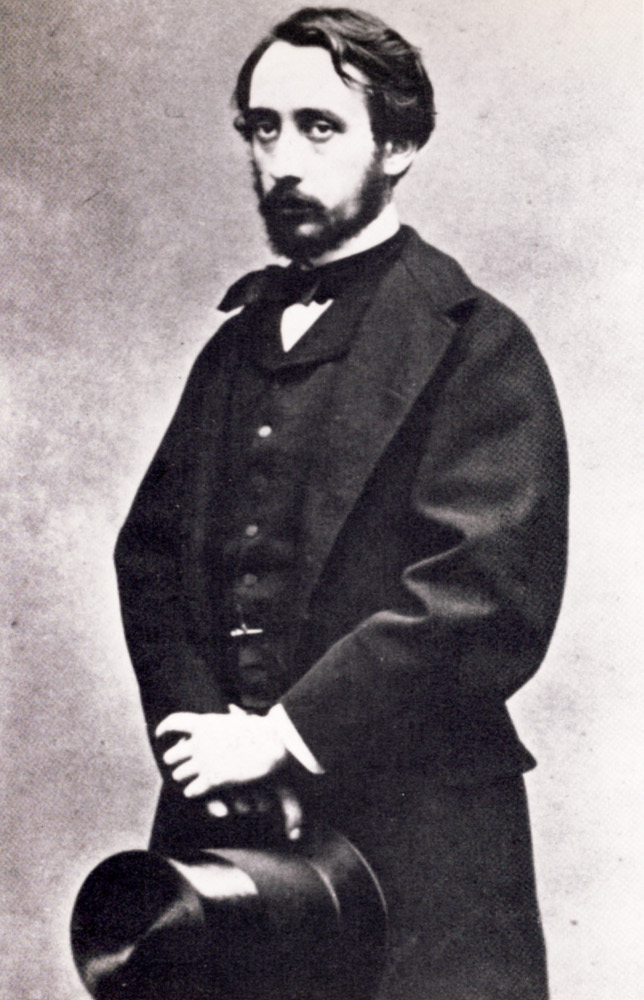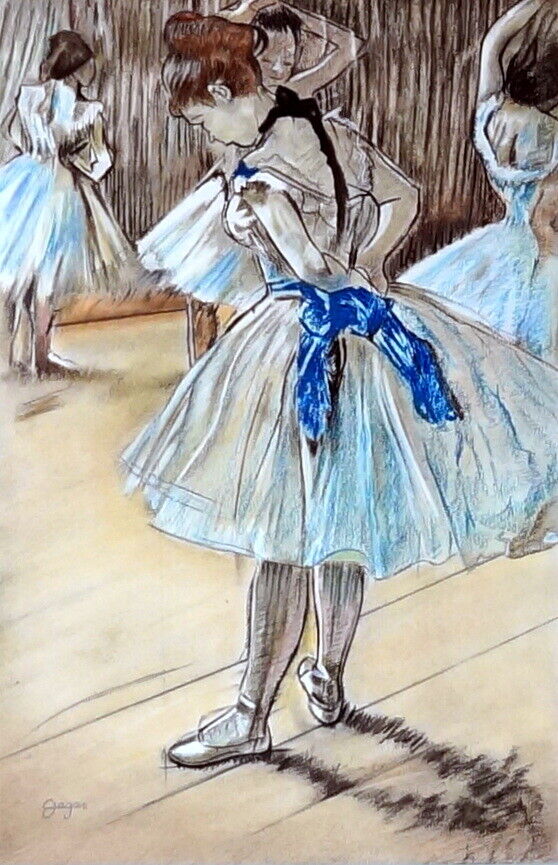- Home
- Art History
- Impressionism
- Edgar Degas
Edgar Degas - Impressionism
Introduction to Edgar Degas

Internationally acclaimed for his notable contributions to the art world, Edgar Degas was an iconic figure. Best known in his role as an Impressionist, Degas was a truly versatile artist, working across a myriad of mediums including drawing, sculpture, and painting.

Early Life
Edgar Degas was born on July 19, 1834, in Paris, France. Degas belonged to a wealthy family which allowed him the luxury of indulging in his interests freely from a young age.
Nurturing the Gift
Despite his early devotion to classical painting and historical themes, Degas' work would later evolve to be synonymous with Impressionism, a style characterized by its dedication to capturing the fleeting quality of light and color.
Training
Degas trained at the prestigious École des Beaux-Arts in Paris, where he absorbed the nuances of masterpiece works from veteran artists. He specifically admired the great master, Ingres, whose influence is apparent in many of Degas' art pieces.
Transition to Impressionism
The end of the 1860s marked a turning point in Degas' artistic career. His traditional training began to merge with his newfound interest in contemporary life, thus paving the way for his distinctive take on Impressionism.
Oscillation between Traditions
While Degas is commonly associated with Impressionism, he preferred to describe himself as a realist. He oscillated between the traditional techniques of his earlier training and the innovative methods of his Impressionist contemporaries.
Degas' Subject Matter
The core of Degas' work lies in his depiction of everyday scenes. Through his works, he transformed the mundane occurrences into meaningful creations. His subjects ranged from ballet dancers, horse races, to women at work and leisure.
Focus on Ballet Dancers
Perhaps his most iconic subjects, Degas’ ballet dancer paintings spotlighted the illusion of effortless grace and beauty while revealing the rigorous discipline and hard work behind the performance.
Influence of Photography
Degas was among the first artists to include the optical effects of photography in his works. This influence is seen in his off-centered compositions and unexpected angles, an innovative approach during that period.

Master of Pastels
Degas was an eminent pastelist. His dynamic combinations of colors, lines, and textures through pastel work are distinctive features of his creations, throwing light on his marvelous control over this medium.
"People call me the painter of dancing girls. It has never occurred to them that my chief interest in dancers lies in rendering movement and painting pretty clothes."
~ Edgar Degas
Sculptures
Beyond painting and drawing, Degas was also known for his sculptures. His bronze piece "Little Dancer Aged Fourteen" is a fine example of his skill in this domain.
|
Use of Unconventional Techniques Degas was unafraid to experiment with unconventional techniques and materials, which led to the creation of unique layers and textures in his works. His work often exhibited a playful mix of mediums. |
Degas and Impressionism
While Degas’ technique and style deviated from the typical characteristics of Impressionism, his themes and their portrayal perfectly aligned with the ideals of this art movement. This made Degas a key figure in paving the way for modern art.
Difference from other Impressionists
Unlike his peers who preferred to paint en plein air, Degas mostly worked in a studio. This allowed him to carefully construct his compositions, lending a distinctive realist influence to his figurative painting.
Significance in Art History
Edgar Degas is one of the pivotal figures in art history. His innovative approach to composition, unique blending of mediums, and exploration of everyday subjects played an integral role in the transition from traditional art to modern art.
Legacy of Degas
With an oeuvre spanning over 60 years, Degas left behind an impressive legacy. Today, his works continue to enthrall art enthusiasts, students, and practitioners alike.
Degas and the Role of Women
Degas' portrayal of women offers insightful discussions about socio-cultural context, as well as a deep understanding of the artist's way of perceiving and projecting his subjects.
Conclusion
Edgar Degas, an iconic figure in the world of art, exemplifies the power of innovation, exploration, and dedication towards art. His unique version of Impressionism offers profound insights and learning opportunities for art teachers and students in their quest to understand and appreciate the rich spectrum of artistic expression. Degas’s life and works are inextricably valuable resources of inspiration and instruction in the art world.
Lesson Ideas for Teachers:
|
Influence of Photography A lesson can center around Degas' innovative integration of photographic effects on his paintings. This can help students comprehend the impact of new technology on art and its adaptations.
Working with Sculpture Art lessons can incorporate Degas' sculptures to provide an understanding of form, texture, and three-dimensional design.
Understanding Degas’ Role in Impressionism By analyzing Degas’ oeuvre, students can piece together an understanding of his unique niche within the wide-ranging spectrum of Impressionism. This provides an excellent means to appreciate the flexibility and range within art movements themselves.
Art Lesson Plans Focusing on Degas Teachers can use Degas’ life, style, and technique as a starting point for art lessons. His distinctive take on Impressionism offers students an opportunity to explore this art movement from a unique perspective. |
Exploring Pastel Work Degas' mastery over pastels can inspire students to experiment with this medium, unlocking their creativity through color dynamics. They can also learn about the conservation and preservation of delicate pastel works.
Depiction of Everyday Life Through observing Degas’ works, students can learn how to transform ordinary scenes into extraordinary art pieces. Creating Inspired Artwork Based on the techniques learnt from studying Degas' works, students can produce their own Impressionist-inspired art pieces. This can consolidate their understanding of Degas' style and technique and foster their artistic creativity. Perspective and Structure Degas often portrayed his subjects from unusual viewpoints. Students can explore these strategies to understand how artists use perspective and structure to convey depth and movement in a two-dimensional space. | |||
|
Understanding Techniques Students can learn Degas’ unique blending of traditional and innovative techniques. Analyzing Degas's works can provide valuable lessons about composition, color theory, and the integrated use of various mediums. |
Okay, so now I've put on some ads from Amazon - from which I may earn a few cents. (2025)






